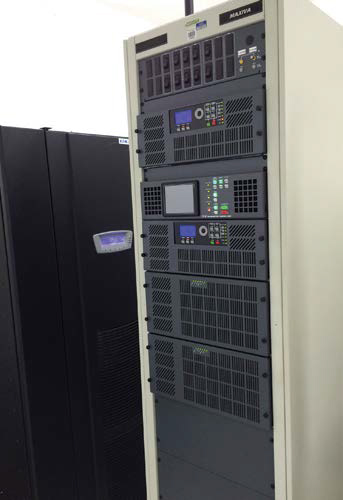GatesAir Cuts Transition Costs for Rede VTV

Maxiva UAX transmitter
SAO PAULO—ISDB-Tb, Brazil’s standard for digital TV, is a CODFM-based modulation scheme that—on a pure signal transmission level—is not dissimilar to the more widely used DVB-T2 standard. However, the ISDB-Tb architecture typically carries a heavier bandwidth signal. That can quickly translate to high transport costs when delivering over-the-air content across very large geographical areas.
This is exactly the case in Brazil, where we broadcast to coastal and interior areas throughout the greater Sao Paulo region. Working with the systems design and integration specialists at Foccus Digital, we deployed a single-frequency network architecture for hybrid analog and ISDB-Tb digital TV. GatesAir transmitters comprise the network and keep our costs manageable en route to a full DTV transition.
REMUX FEATURE
The GatesAir SFN architecture comprises of 31 Maxiva UAX UHF transmitters of varying power levels (50 watts to 1kW), all synchronized to deliver content on the same frequency. From a strictly performance and quality viewpoint, the network performs as assured.
In an SFN configuration, Maxiva UAX transmitters provide an ideal manner to optimize spectrum and bandwidth for TV. GatesAir addresses the previously mentioned higher transport costs with a variety of transmitter input options that enable management and delivery of satellite, L-Band and ASI over IP sources across the network.
The Maxiva design for Brazilian TV networks integrates a multiplexing solution to “remux” the over-the-air broadcast transport stream inside the transmitter. This means that regardless of how the signal reaches the transmitter, the signal is recreated for broadcast in analog or ISDB-Tb DTV.
This is a significant operational benefit given the complex nature of managing many analog and digital signals across long distances. Remux reduces the costs of bandwidth-heavy transport and the architecture allows us to deliver more DTV-associated services, including ISDBTb mobile channels, across the Rede VTV network.
LOW LABOR AND OPERATIONAL COSTS
The plug-and-play GatesAir SFN architecture simplified both the initial rollout and commissioning of the network, as deployed and managed by Foccus Digital. Maxiva transmitters lack the intensive software programming associated with many SFN transmitter networks, often required to remove signal overlap and interference between transmitters of close proximity.
Additionally, the high reliability of these transmitters minimize our current and long-term maintenance requirements. Coupled with a modest set of common spare parts to share across the network—along with the redundant, modular and hot-pluggable architecture of Maxiva UAX transmitters—our labor and operational costs will remain exceptionally low over the life of the network.
Though Brazil has set a national analog TV shutoff for 2018, the main Rede VTV coverage cities of Campinas and Santos will turn off analog programming in 2017. Foccus Digital has designed a turnkey system for hybrid analog and ISDB-Tb programming to help prepare us for this transition. With ERI and Spinner filters and combiners to marry analog and digital signals in common antenna systems, as well as Selenio networking/encoding systems from Imagine Communications to support high-quality, multichannel DTV programming with outstanding bandwidth efficiency, the GatesAir SFN architecture has Rede VTV prepared for the DTV era well into the future.
For additional information, contact GatesAir at 513-459-3447 or visitwww.gatesair.com.
Get the TV Tech Newsletter
The professional video industry's #1 source for news, trends and product and tech information. Sign up below.
